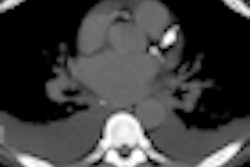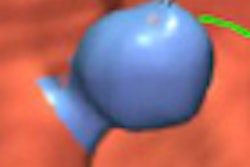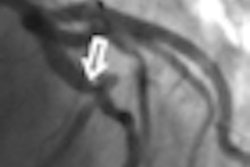Physicians often order abdominal CT scans for pediatric patients who have undergone blunt abdominal trauma and have blood in their urine. However, because this procedure has low sensitivity and specificity, not ordering it may be more clinically prudent, according to a report in Urology.
A multidisciplinary team of emergency physicians, urologists, radiologists, and pediatric surgeons from the Assaf Harofeh Medical Center in Zerifin, Israel, reached this conclusion after reviewing the medical records of children treated for renal trauma between 1999 and 2006. Their recommendations for conservative management of children with suspected renal trauma support the Image Gently campaign's recommendations to seek other alternatives before exposing children to radiation (Urology, August 11, 2010).
All 46 children admitted for renal trauma and hematuria had an abdominal CT scan. Five of the patients required intervention; the remainder were managed conservatively.
Of the total, 19 patients (41.3%) had macrohematuria. More than half of these patients (57.9%) had third- or fourth-degree injury, and three patients with fourth-degree renal injury required surgical intervention. Three patients had no renal injury at all. In this group, CT scans identified renal injury in 84% of the cases, according to lead author Orit Raz, MD, and colleagues.
In addition, 27 patients (58.7%) had microhematuria. Three patients were diagnosed with second-, third-, and fourth-degree renal injury, representing 11.1% of this group. The majority of children (66.7%) had no renal injury, and 22.2% were diagnosed with first-degree renal injury. In this group, one patient diagnosed by CT exam with second-degree renal injury and one patient with fourth-degree renal injury had surgical intervention.
The report from the CT exam of the patient diagnosed with grade 4 renal injury, suspected extravasation of urine, and laceration of the spleen proved to be a misleading interpretation. The patient's kidney appeared to be viable, no extravasation was demonstrated, and, ultimately, no surgical action was taken toward the kidney or spleen.
Abdominal CT for patients with microhematuria showed 59% sensitivity, 14% specificity, 84% positive predictive value, and 62% negative predictive value. By comparison, for patients with macrohematuria, sensitivity was 100%, specificity was 61%, positive predictive value was 18%, and negative predictive value was 93%.
Based on their evaluation, the authors suggest that children presenting with microhematuria and blunt abdominal trauma receive a thorough clinical examination and follow-up but forego a CT scan. However, they do recommend that an abdominal CT exam be ordered for pediatric patients with macrohematuria. This is the protocol used with adult patients at Assaf Harofeh Medical Center.
Related Reading
CT can rule out abdominal injuries after blunt trauma in kids, June 10, 2010
MRI finds missed injuries on negative CT of blunt trauma, May 12, 2010
FAST recommended first for kids with blunt abdominal trauma, May 7, 2010
Copyright © 2010 AuntMinnie.com



















